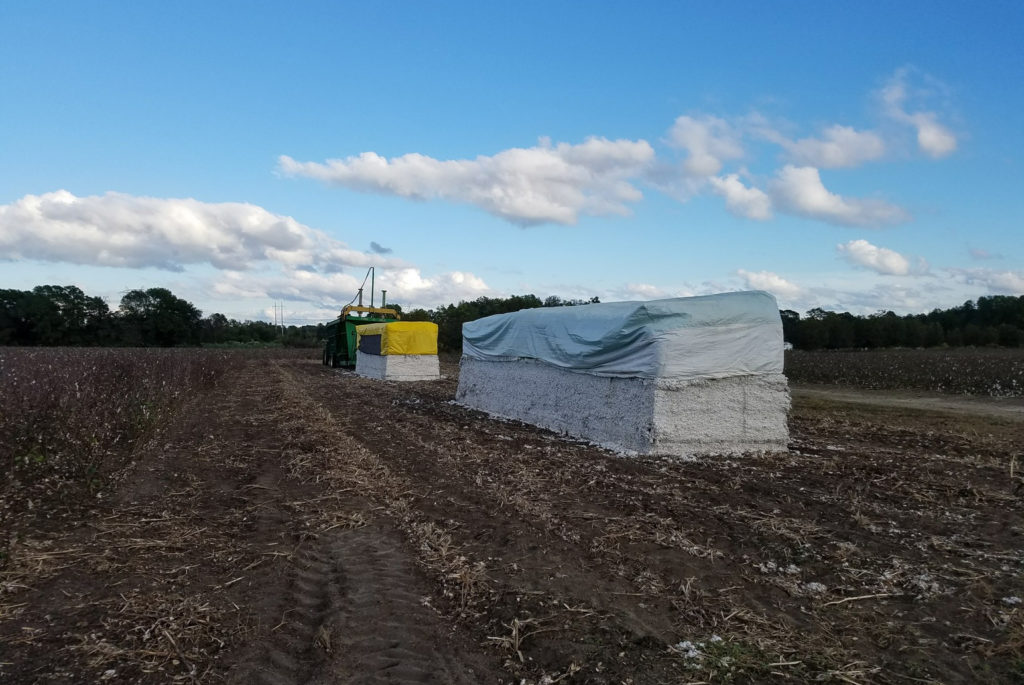The National Predictive Modeling Tool Initiative (NPMTI) is designed as a multi-year program to develop research-based “tools” that will help forecast incidences of diseases and mycotoxins affecting U.S. crops. Armed with this information, growers and their consultants will be able to make better informed management decisions.
The NPMTI operates under the auspices of the USDA-Agricultural Research Service (ARS). It was established by Congress as part of an agricultural appropriation for the 2020 federal fiscal year and is expected to operate for 10 years or more. It was modeled after the U.S. Wheat & Barley Scab Initiative, which is in its 26th year of funding.
To view NPMTI at a glance, click here to download an infographic.
To download NPMTI’s scope of work as a PDF, click here.
To view NPMTI’s Policies and Procedures, click here.



Goals
- Ensure Crop Sustainability and Crop Quality.
- Provide Climate Change Resilience.
- Improve Soil Health.
- Monitor Pathogens and Microbial Diversity in the Environment, but Not Limited to Crop Residues, Soils, and Air.
- Improve Disease Management, Thereby Reducing Yield Losses.
- Increase Precision of In-Season Disease Management Tactics.
- Increase Precision of Pesticides and Reduce Use.
NPMTI will incorporate monitoring techniques to address all sides of plant disease triangle to provide a more precise predictive tool for in-season disease risk management.
NPMTI Hypothesis
In-season risk for plant disease development can be improved to near real-time by developing a comprehensive and coherent modeling tool that integrates:
- Quantifying pre-season pathogen inoculum density in the field.
- Superior crop/host genetics.
- The effects of soil type and other agronomic factors on pathogen inoculum density.
- An air monitoring system for wind-borne pathogens.
- Meteorological (and other agronomic data), in a coherent information and decision support system.
- The use of other artificial intelligence platforms (e.g., unmanned aerial vehicles).
- Information from historic outbreaks for specific plant diseases.
- Information about new disease pathogens as they emerge.
NPMTI will incorporate monitoring techniques to address all sides of the “plant disease triangle” concept to provide a more precise predictive tool for in-season disease risk. In turn, this will help to achieve the goals listed above.
Rationale
Year to year and state to state, disease severity and the resulting yield losses can differ greatly. In turn, disease management varies from year to year, and each growing season demands constant attention. Farmers typically rely on time-consuming tactics like scouting, which does not result in the most timely action and grows increasingly difficult and practical as farm sizes increase.
Disease development is dependent on three factors, which are often called the plant disease triangle: the presence of the pathogen, the susceptibility of the hybrid to that pathogen, and the environment (prevailing weather conditions, agronomic practices, cropping history, etc.). Disease management relies on manipulating these factors in ways that discourage infection or slow the progression of disease. For example, these practices may include: growing a resistant hybrid, managing previous crop residue (often a source of inoculum), crop rotation, or applying a fungicide.
Due to climate change and unprecedented weather patterns in recent years, many growers across the nation have adopted soil conservation practices including reduced tillage and cover crops to address the resulting threats of soil erosion, rainfall runoff, and soil crusting. The practices have helped to improve the sustainability and climate change resilience of U.S. agriculture; however, these soil conservation practices have precluded the use of two standard disease controlling tools: 1) crop residue incorporation (i.e., sanitation) and 2) exclusion of alternate hosts.
Historically, post-harvest crop residues were buried to decompose. With conservation tillage, these residues remain on the surface providing climate change resilience and soil health benefits. However, this also can increase pathogens for future infestations. Farmers need tools to predict when pathogens will threaten their crop yield and quality. Wind- or insect-dispersed pathogens require community efforts to control costs and minimize damages. NPMTI represents an inclusive and diverse intersection of adapting recent advancements in human pathogen detection and modeling to agricultural systems.
Public Benefit of Predictive Modeling
Currently, growers rely primarily on scouting to determine the type and severity of disease in a particular field. As farm sizes increase, it becomes increasingly difficult to scout every field. Predictive modeling is an essential benefit— the information provided is more precise and saves considerable time and energy.
For some crops, models have been developed to predict risk of disease and recommend a management practice. Good examples include the Fusarium head blight risk assessment tool, which integrates specific weather variables 15 days prior to flowering to estimate the risk of Fusarium head blight being greater than 10%. Farmers, extension specialists, or crop advisors use the information to schedule targeted fungicide applications to manage disease, reduce losses, and ensure grain quality. More recently, a model to predict white mold of soybeans was developed using 30-day weather averages, crop growth stage, and cultural practice data that has been validated and integrated into a smartphone app. Producers and consultants use the app to determine if a fungicide application is warranted.
The Case for Advanced Modeling
The NPMTI is implementing advanced innovative techniques to elevate current epidemiological models and detect early onset of plant disease. Its research teams are actively engaged in the next generation of agriculture innovation, and NPMTI will allow the public to easily access that data. In turn, society benefits as farmers are more easily able to protect our domestic food supply and implement climate change resiliency tactics.
While epidemiological models predict the likelihood of disease based on environmental conditions conducive to the pathogen of interest, pathogen monitoring methods that include post-harvest soil and crop residue sampling and in-season spore trapping could also be used to detect early onset of plant disease. A strong correlation between spore collections and model predictions of the spread of soybean rust in the U.S. has been reported. Cucurbit downy mildew outbreaks in the eastern U.S. were predicted using a forecasting system that combined data on known inoculum sources, long-distance atmospheric spore transport and spore deposition modules. In recent years, spore trapping technologies have advanced in tandem with the advances in molecular tools available for pathogen identification. Yet, their inclusion into predictive models for disease detection are vastly underutilized. Since many field crop diseases are spread by spores, a network of spore samplers across a region could be used as part of a disease-forecasting system that will build off of post-harvest soil and crop residue sample results.
Methods to forecast inoculum exposure would allow growers to take timely preventative actions such as: delayed planting, resistant varieties, selective fungicides, crop growth regulators, irrigation management, targeted rotations, and – only where necessary – limited tillage, among other agronomic practices.
The last two decades have demonstrated that the U.S. is vulnerable to invasive and resurgent pathogens spreading from distant states or countries, often triggered by unusual weather. The next two decades could be even more challenging as pathogens from the South spread farther north. A forecast system would provide growers actionable detection of pathogens before widespread damage occurs. It also would provide public scientists data on changes in pathogen diversity necessary to breed and deploy protective host plant resistance traits.
NPMTI leading the way
By late 2024, NPMTI’s modeling tools will be publicly available through an easily-accessible, online dashboard and mobile app. Ultimately, NPMTI will be a national, multi-crop disease forecasting tool that will expand to include a wider diversity of crops and scientific disciplines across the United States. The potential exists to save farmers hundreds of millions of dollars in crop losses.
The current endeavor brings together a network of scientists from Land Grant universities, USDA-ARS, and cooperating national laboratories. NPMTI is foundational for leveraging human infectious decision support tools for agriculture. Adaptation of these tools for key diseases of a variety of crops will facilitate disease management and preventive/mitigative actions, and planning for disease prevention. These tools offer decision support at varying temporal and spatial scales and can be used along the spectrum of engagement, from early detection to outbreak management to post-harvest investigation to host plant resistance breeding.
Over time, baseline background levels of various pathogens can be established, which will help with anomaly detection and serve as an early warning system for our nation’s food security.
To view NPMTI at a glance, click here to download an infographic.
To download a PDF about the scope of NPMTI’s work, click here.
